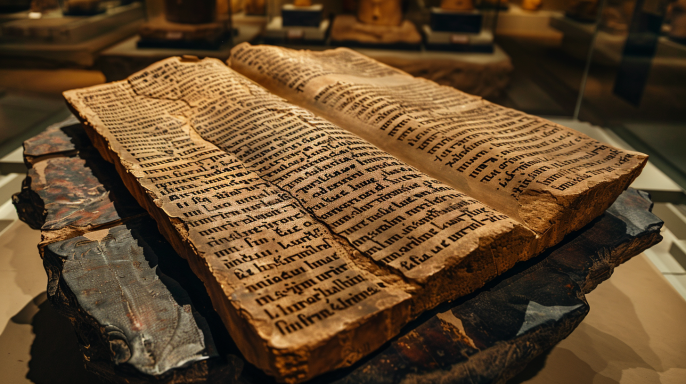Introduction
The Sumerian King List is one of the most intriguing documents from ancient Mesopotamia. This manuscript, inscribed on clay tablets, chronicles the reigns of various Sumerian kings, blending historical facts with mythological narratives. What makes this list particularly fascinating is its inclusion of rulers with implausibly long lifespans, suggesting that the document serves purposes beyond mere record-keeping. The Sumerian King List raises questions about how ancient civilizations viewed their past, the blending of myth and history, and the possible symbolic meanings behind these legendary reigns.
Discovery of the Sumerian King List
Initial Discovery
The Sumerian King List was first discovered in the early 20th century. It was found in various locations across Mesopotamia, including the ancient cities of Nippur, Larsa, and Ur. The most complete version, however, was found in the ruins of the ancient city of Larsa.
Significance of the Discovery
The discovery of the Sumerian King List provided historians and archaeologists with valuable insights into the political and cultural history of Sumer. It also sparked debates regarding the interpretation of the information contained within the document.
Structure of the Sumerian King List
Format and Composition
The Sumerian King List is written in cuneiform script on clay tablets. The list is divided into several sections, each detailing the reigns of kings from different dynasties. It starts with mythical antediluvian rulers and progresses through to more historically verifiable figures.
Notable Sections
- Antediluvian Kings: These are mythical figures said to have ruled before a great flood. They are noted for their extraordinarily long reigns, often spanning thousands of years.
- Post-Diluvian Kings: These sections list kings who ruled after the flood, with reigns that are more plausible in length.
The Antediluvian Kings
Legendary Reigns
The antediluvian section of the Sumerian King List includes rulers like Alulim, who is said to have reigned for 28,800 years, and En-men-lu-ana, with a reign of 43,200 years. These figures are considered mythical due to the implausibility of such long lifespans.
Possible Symbolism
Some scholars suggest that these exaggerated reigns could symbolize the perceived greatness and divine nature of these early kings. Others believe they might represent astronomical or calendrical cycles.
Historical and Mythological Blending
Transition from Myth to History
The Sumerian King List gradually transitions from purely mythical rulers to those whose reigns can be corroborated by archaeological evidence. This blending of myth and history reflects the way ancient Sumerians understood their past.
Influence of Mythology
The inclusion of mythological elements in the Sumerian King List highlights the importance of mythology in legitimizing rulers and reinforcing social and religious norms.
The Purpose of the Sumerian King List
Political Propaganda
One theory is that the Sumerian King List was used as a tool of political propaganda. By linking contemporary rulers to ancient, mythical figures, kings could legitimize their rule and assert their divine right to govern.
Religious Significance
The document may also have had religious significance, reflecting the Sumerians’ belief in the divine origins of their rulers and the cyclical nature of time and kingship.
Debates Surrounding the Sumerian King List
Accuracy and Reliability
Scholars debate the accuracy and reliability of the Sumerian King List. While some sections align with other historical records, the mythical elements challenge the document’s credibility as a purely historical source.
Interpretative Challenges
Interpreting the Sumerian King List requires a nuanced understanding of Sumerian culture, religion, and mythology. Scholars must navigate the complexities of distinguishing historical fact from mythological fiction.
Modern Interpretations
Archaeological Corroboration
Archaeological discoveries have corroborated some of the information in the Sumerian King List, lending credibility to certain sections while raising questions about others.
Symbolic Interpretations
Modern scholars often interpret the exaggerated reigns and mythical elements as symbolic rather than literal. These interpretations consider the cultural and religious context of ancient Sumer.
Legacy of the Sumerian King List
Influence on Later Cultures
The Sumerian King List influenced later Mesopotamian cultures, including the Akkadians, Babylonians, and Assyrians. It served as a model for recording royal lineages and legitimizing rulers.
Enduring Mystery
Despite extensive study, the Sumerian King List remains an enduring mystery. Its blend of history and mythology continues to captivate scholars and enthusiasts alike.
Conclusion
The Sumerian King List is a remarkable document that offers a glimpse into the world of ancient Sumer. Its combination of historical records and mythological narratives reflects the complex ways in which early civilizations understood their past. While debates about its accuracy and purpose persist, the Sumerian King List remains a testament to the rich cultural and intellectual heritage of the Sumerians.
FAQs
1. What is the Sumerian King List?
The Sumerian King List is an ancient manuscript that records the kings of Sumer, detailing their reigns and dynasties. It includes both historical figures and mythical rulers with improbably long reigns.
2. When was the Sumerian King List discovered?
The Sumerian King List was discovered in the early 20th century in various locations across Mesopotamia, including the ancient cities of Nippur, Larsa, and Ur.
3. Why are some kings on the list said to have reigned for thousands of years?
The exaggerated reigns of some kings, especially those in the antediluvian section, are considered mythological. These long reigns may symbolize the divine nature of these rulers or represent astronomical or calendrical cycles.
4. What is the significance of the Sumerian King List?
The Sumerian King List provides valuable insights into the political and cultural history of ancient Sumer. It also reflects the blending of history and mythology in early civilizations.
5. How is the Sumerian King List interpreted by modern scholars?
Modern scholars interpret the Sumerian King List as a blend of historical records and symbolic narratives. They consider the cultural and religious context of ancient Sumer when analyzing its content.

